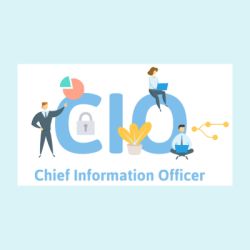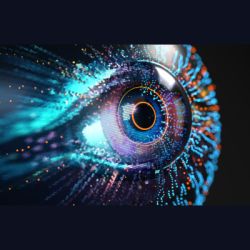MEDICA HEALTH IT FORUM shines a light on general trends within digitalisation and their potential for application in healthcare
In recent years, digitalisation has entered almost every area of daily life. Healthcare is not an exception. As early as the mid-80s, when the history of health IT was really getting started, the internationally leading medical trade fair MEDICA in Düsseldorf featured intensive coverage of the issue in its programme. In the beginning, these were offers related to hardware and software for so-called “office EDP”. A special show during this era, the “MEDICA Medienstraße” (MEDICA media street) presented doctors with the advantages of using IT. Now, and especially in the wake of the Covid-19 pandemic, the speed of digitalisation has again noticeably increased. Artificial Intelligence (AI), telemedicine, wearables, electronic patient files and big data are just some of the buzzwords that are keeping the healthcare economy busy. Some things have not changed: This year MEDICA, as an international platform with more than 5,000 participating companies, will again show how these trends shape medical care in a modern way (trade fair duration: 13 – 16 November, 2023).
The MEDICA HEALTH IT FORUM in Hall 12 (as a modern-day successor to the “MEDICA Medienstraße” of old) with its varied agenda and absolutely top-notch speakers will take a closer look at which opportunities open up for the medical sector through adapting common trends like the growing use of the AI tool ‘Chat GPT’ or lively communication through social media.
PD Dr Jeanette Miriam Lorenz, as the head of the department of “Quantum-enhanced AI” at the Fraunhofer IKS institute, will kick off the opening session of the Forum with exactly this topic (Monday, 13 November, 12 noon – 1 p.m.). Quantum computing has the potential to massively change numerous industries. Currently, however, a lot of research is still needed before broad applications can become possible.
From “med babble” to simple language – phrased by Chat GPT
Even without the high-performance calculations of quantum computing, AI is already making a contribution to healthcare. For example, the chat bot ‘Chat GPT’ uses AI to create matching texts in reply to queries phrased as precisely as possible. Many people view this as having great potential, but also warn against introducing it too quickly and using it uncritically – but what is the status when it comes to the medical sector? Prof. Michael Forsting, director of the institute for diagnostic and interventional radiology and neuroradiology (Institut für Diagnostische und Interventionelle Radiologie und Neuroradiologie) of the University Hospital in Essen, will discuss this at a panel meeting of experts (on 14 November). He believes that, “In the long term, this will not be disruptive.” However, “The computer writes things that we did not expect. It seems to be more than just a calculating machine. This also has an effect on medicine.”
As an example, Forsting cites a more simple language used in doctors’ letters. Doctors usually employ a terminology which is mutually highly comprehensible, unambiguous and good for communication among experts. But what about the patients? “If you want to pass on basic information in a more simplified language, you can easily accomplish this with Chat GPT, without needing to do a lot of extra work”, says Prof. Forsting. When documenting findings, the situation is similar, in his opinion. According to Prof. Forsting, Chat GPT is able to give structure to a report and translate it into a simpler, clearer language. The product could probably also be integrated in databases. However, especially Chat GPT is prone to stray from the truth. According to Forsting’s assessment, one reason for this are the basic data: “If you feed the algorithm with medical texts in isolation, however, the AI improves dramatically.” The quality of the replies therefore could be greatly increased if Chat GPT had direct access to databases. This digitalisation would not make doctors redundant, but it would make their work easier, for example in regard to writing medical reports based on electronic patient files, says Forsting. He summarises: “The goal is to somehow compensate for the foreseeable lack of doctors.” But whether or not this is “disruptive” will be evident only in hindsight.
Clothes as a source of data and AI accelerate diagnostics
Data can also be gathered using smart textiles. For example, international research teams headed by Prof. Aldo Faisal, chair of Digital Health at the University of Bayreuth, have developed a novel set of instruments for diagnosing and monitoring neurological diseases based on sensors worn on the body (wearables) and AI. “We detect the smallest changes in daily life and evaluate them”, says Prof. Faisal. Trials involved Friedreich’s ataxia and Duchenne muscular dystrophy. Using conventional methods, the time until diagnosis could take two and a half to three years, says Faisal, but with AI, it takes approximately nine months. This form of evaluation also allows conclusions about the expression of damaging genes. “We can use our digital biomarkers for genetics”, says Faisal and adds: “After starting a treatment, our biomarkers can help to monitor its efficiency and make any necessary adjustments.” This is of use not only for patients, but also for increasing the speed at which new drugs are developed.
The algorithm is intended to be applicable for many diseases. It is being tested for stroke cases. “We can use it to determine the risk of a second stroke right at the patient’s bedside”, says Faisal, revealing part of her presentation at the MEDICA HEALTH IT FORUM (on Tuesday, 14 November). This would require an observation time of merely one and a half hours. The AI is simply fed with data from everyday movements – and not with specialised data. “What you need is an AI that can determine which movements among these are critical”, Faisal describes the requirements.
How safe is AI?
A lasting central question remains concerning the safety of an AI. This is the field of Dr Narges Ahmidi, head of the department “Reasoned AI Decisions” at the Fraunhofer IKS institute. Dr Ahmidi will moderate the forum session about the topic of “Safe AI” (at noon on Wednesday, 15 November). For her, there is a clear division of roles: “Doctors are doctors. They are not quality control engineers or similar.” An AI should be thoroughly tested before being applied to patients. It is clear that good data are decisive, and gathering these is not always easy. Depending on the rarity of a disease, there is a difference in how many data are needed. For rare diseases, there is an increasing trend to use algorithms that need only few data. “We have many solutions, but we need to bring them to the patients”, says Ahmidi and emphasises that doctors should not blindly trust the solutions on offer. There are institutes that check an AI before it makes contact with patients. “We’re here to help”, says Ahmidi. For her, a good AI is an AI you can trust and that does not surprise you with unexpected answers. “Because unexpected behaviour in contact with patients is damaging”, Ahmidi emphasises.
Bart de Witte and the “anti-Gutenberg-moment” of medical AI
Bart de Witte stands for an approach involving the whole of society, and is one of the world’s leading specialists for AI and digital transformation within the health sector. His presentation at the session about “Safe AI” also emphasises the high calibre of the forum and is awaited with eager expectations. Because, de Witte argues, the health care sector is about to experience an “anti-Gutenberg-moment” unless medical AI is not “democratised”. This is a scenario that threatens if, for example, a single company were to possess the majority of global medical information in digital form. Bart de Witte therefore is active in establishing an open source community and initiative for AI in healthcare. He is the founder of “Hippo AI Foundation” which wants to utilise the collective expert knowledge and creativity of the world’s scientific community with open research, in order to create innovative, accessible, just and effective solutions.
Health videos that really help
Social media platforms are accessible to a broad public. However, they should be viewed critically as sources of information on health topics. YouTube and co. do not always set patients on the right path – and doctors have to spend a lot of time correcting misinformation. In short, this development needs to be addressed and discussed. This will happen in the Forum session “TikTok, Insta, YouTube & Co. – Engaging, Learning and Networking on Social Media Platforms” (on 14 November at 2 p.m.).
Prof. Christian Sina from the University Hospital Schleswig-Holstein will present how YouTube, for example, can be used to spread correct information. He himself is a “YouTuber”, although he does not see himself as an influencer. YouTube is simply important, also for users looking for health-related information. And with ‘YouTube Health’, there is the option of new perspectives. This special offer by YouTube is also being introduced in Germany with a series of health features. Information boxes featuring context on the source of health information are intended to help users recognise videos from reliable sources. Also, videos from these sources will be highlighted in search results in the field for content related to health if users are searching for health topics. This context information is intended to facilitate finding and evaluating health information on the internet. In order to find reliable sources, the criteria developed by the National Academy of Medicine (NAM) and validated by the World Health Organisation are employed.
Prof. Sina believes this to be a step in the right direction, not only for YouTube. “The decision whether to go to a preventive medical check-up is made at home – and YouTube plays a part”, says Prof. Sina and is convinced that viewing informative videos before any measures are taken (e.g. a colonoscopy) can be an important part of the pre-treatment consultation. However, according to studies, click rates do not seem to be a valid indicator for quality when it comes to medical information. Which indicators and metrics are more suitable instead is currently being researched, inter alia, by the institute for nutritional medicine (Institut für Ernährungsmedizin) headed by Prof. Sina at the UKSH in Lübeck.
Source: Medica Trade Fair

























